The animal kingdom provides so much diversity that it’s almost impossible to keep track of all the different species in the world. Sometimes the distinction between close relatives is too hard to even notice. But different species often evolve in similar ways because of their environment.
We at Bright Side gathered 16 pairs of animals who are almost indistinguishable from each other at first sight in order to show you the differences between them.
1. Jaguar vs leopard
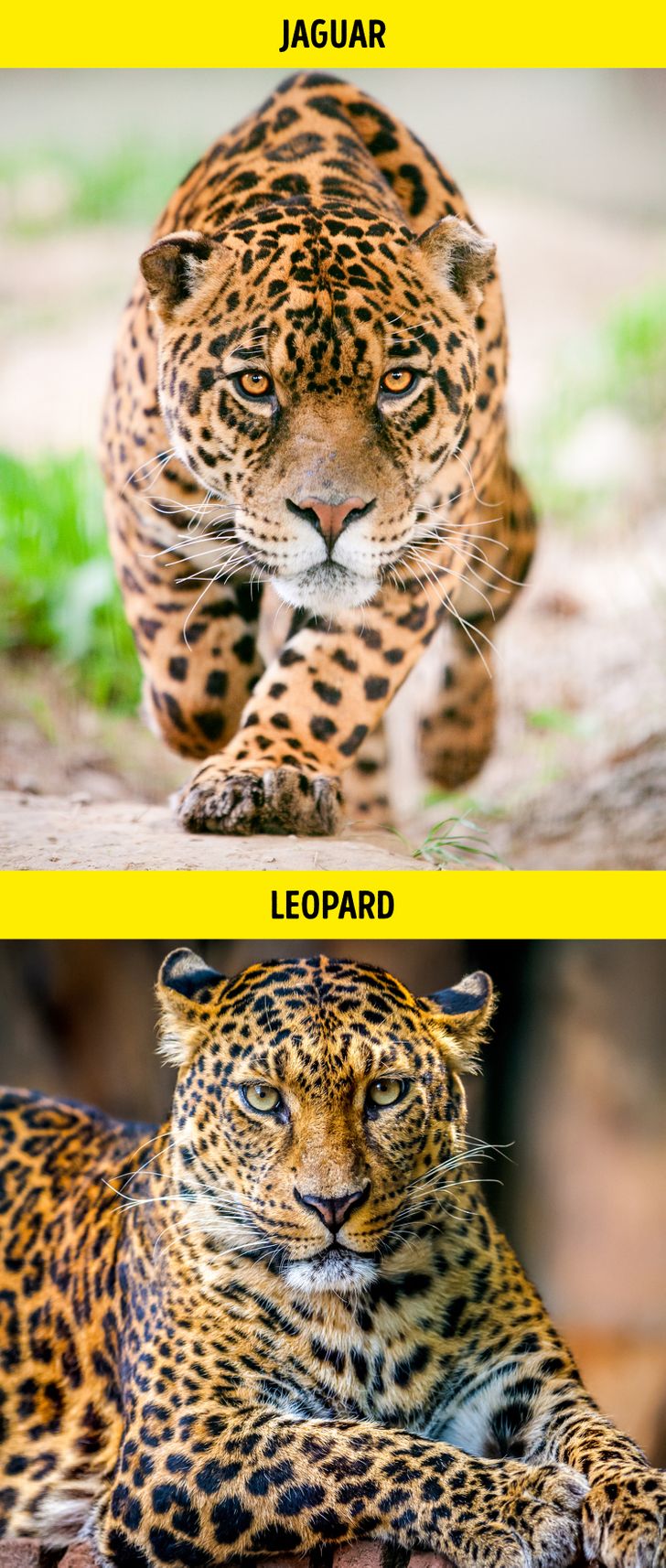
Despite their similarities, these big cats inhabit different continents and climate zones: leopards live in African savannas, while jaguars dwell in South American tropical forests. Jaguars are also larger and bulkier, and unlike leopards and many other cats, they’re fond of water.
2. Alligator vs crocodile
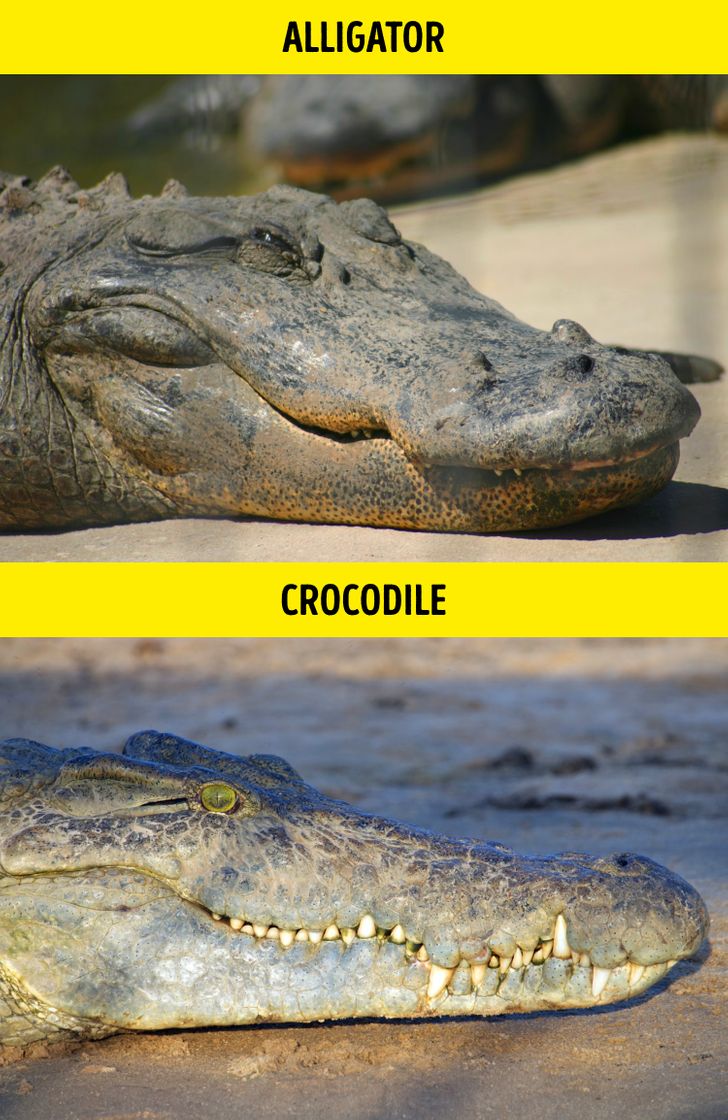
You can easily identify these 2 by the shape of their snouts: crocodiles have prominent, elongated V-shaped faces while alligators have shorter, wider U-shaped ones. Also, consider the teeth: crocodiles display their trademark toothy “grin” with every fourth tooth visible. Conversely, the alligator’s upper jaw is broader than the lower one, so its teeth aren’t visible for the most part.
3. Wasp vs hornet
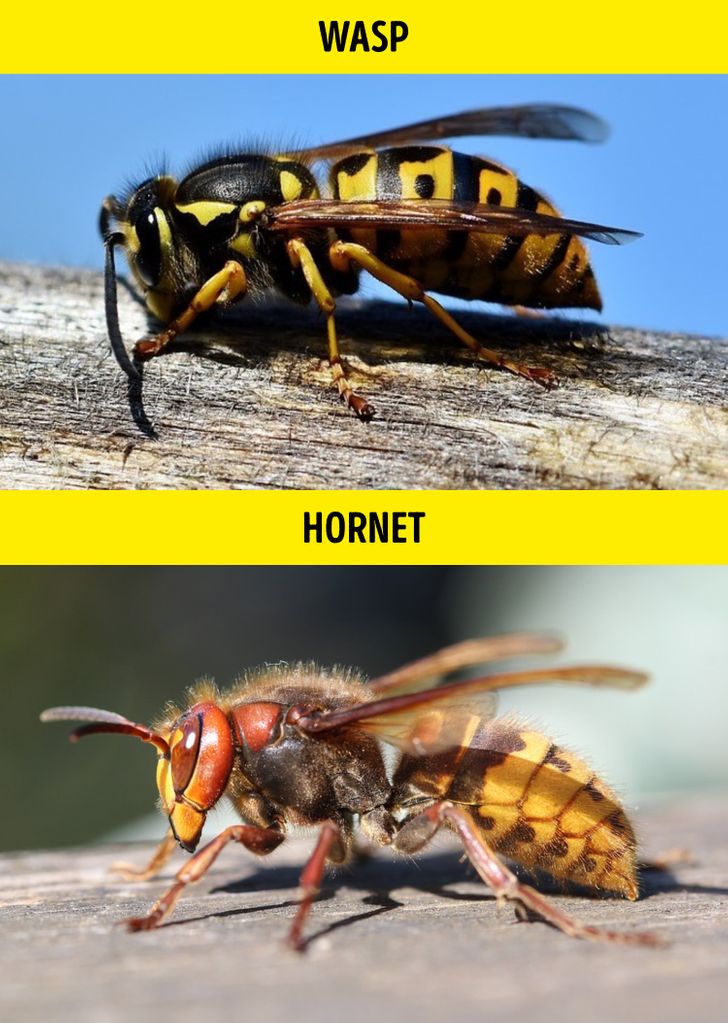
Both insects are menacing, that’s for sure. Hornets are larger and boast orange and black coloring, resembling spots rather than stripes, while wasps are more brightly colored and have yellow and black rings. You’re better off avoiding both.
4. Seal vs sea lion

You’ve most likely met seals as cute plushy animals and sea lions as circus acrobats. Seals are covered with fur and have tiny front flippers which prevent them from walking, forcing them to wiggle on their bellies. Sea lions have smooth skin and vast flippers that they use to move on the ground.
5. Turtle vs tortoise

These 2 are both mobile (but very slow at that) and boast 4 legs. But the “turtle rock” is aquatic and has markings that resemble stains and circles on the water to better hide in the ponds. The “tortoise rock” is a land animal and spends most of its time on the ground — that is, as a literal rock.
6. Raven vs crow vs rook vs jackdaw
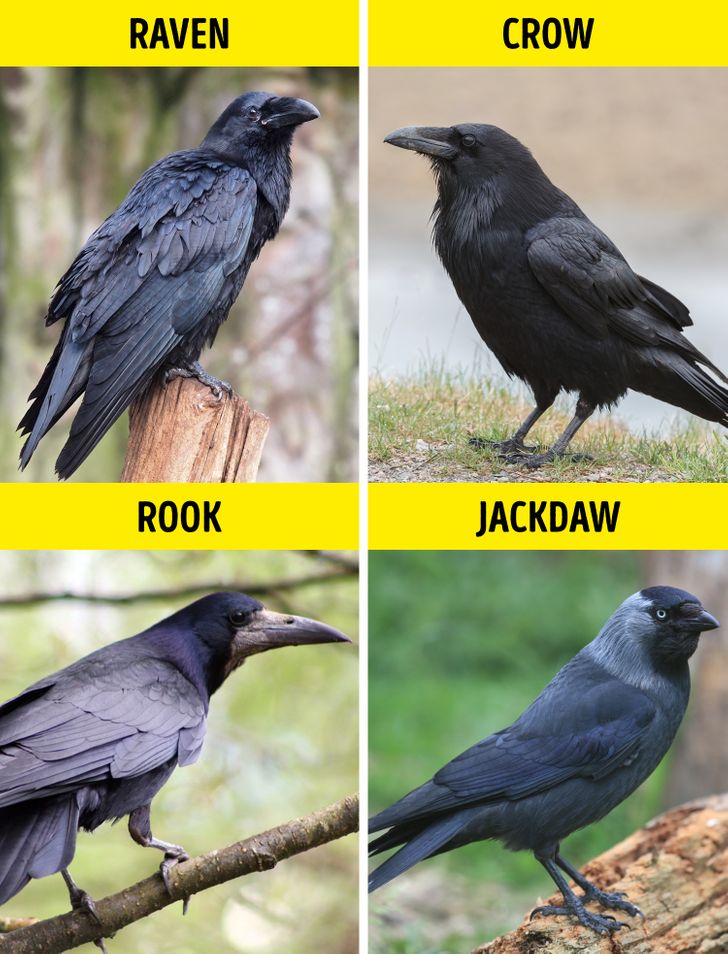
Most corvids look fairly similar (excluding jays who are like a theatre kid in a goth family). Ravens are the loftiest and most fashionable thanks to their “beard” of throat feathers. Crows and rooks are of the same size, but rooks have a distinct grey beak and fancy feather “pants” on their legs. Jackdaws are the goofiest-looking thanks to their very short beaks and a round heads with black caps.
7. Donkey vs mule
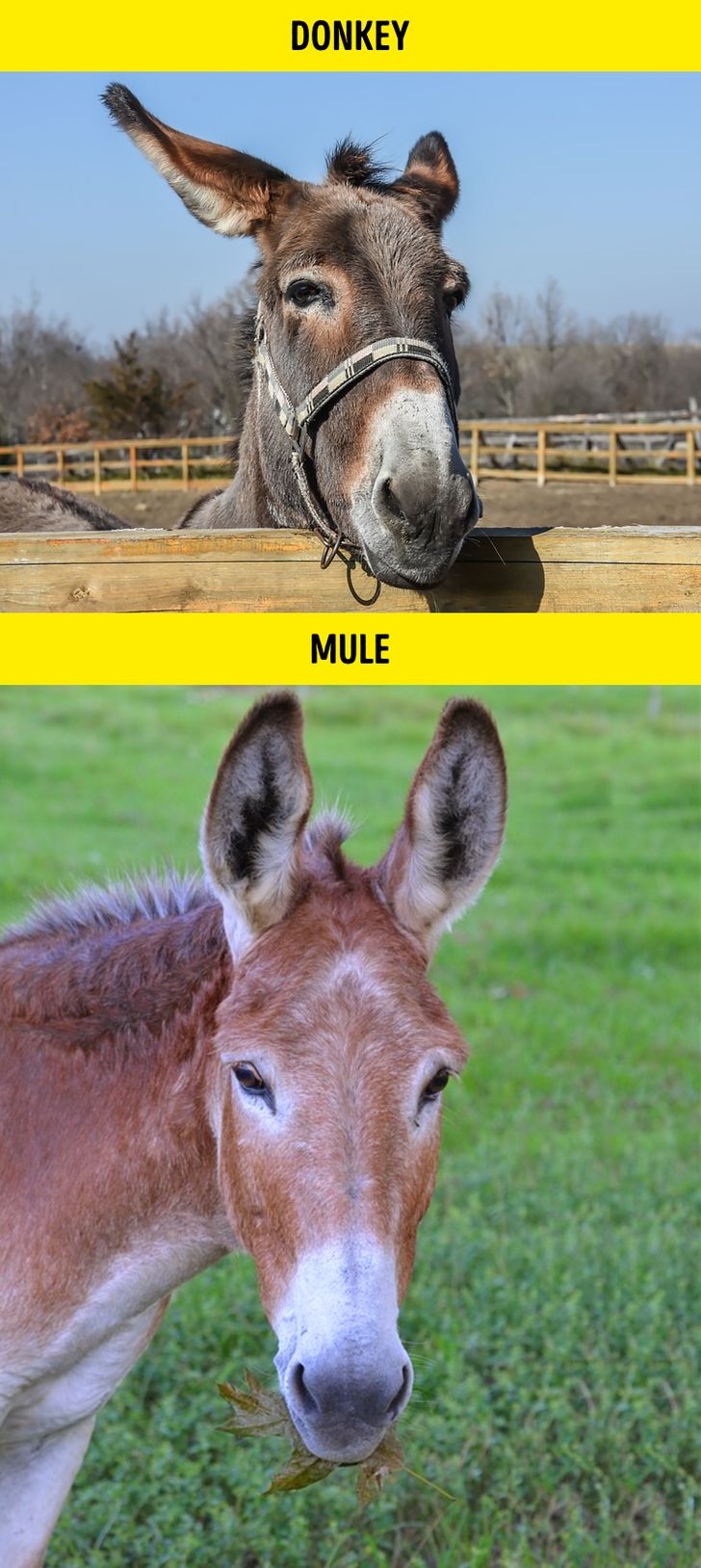
This one is tricky for a simple reason: while the donkey is its own species, a mule is a hybrid of donkey and horse. Funnily enough, it looks exactly like what you’d think these 2 animals would look like: an elegant head of a horse with ridiculously oversized donkey ears.
8. Hare vs rabbit
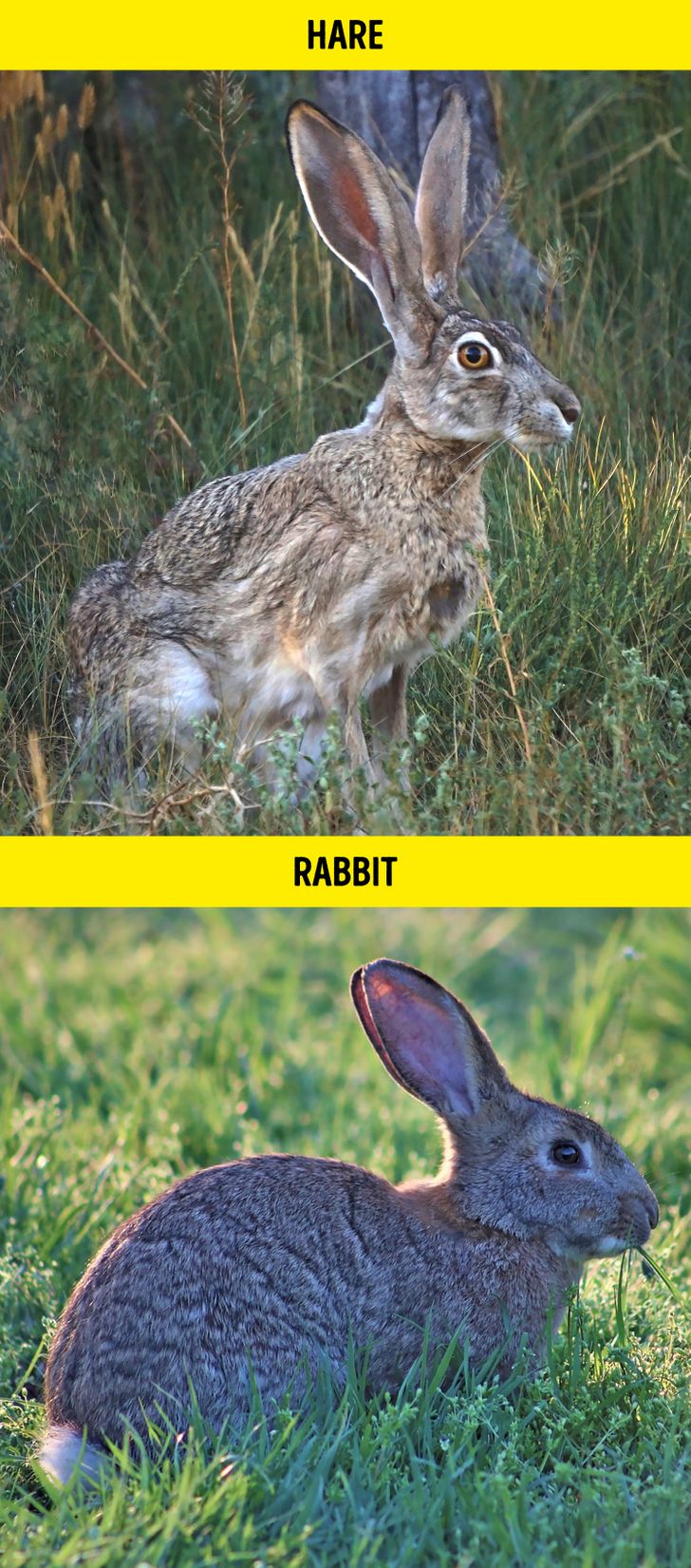
If you want a cuddly little pet, a rabbit is your best bet, but a hare definitely is not. Hares are larger and faster and have longer legs and ears. Rabbits are smaller, fluffier, and overall “cuter.” They even eat different food: rabbits prefer vegetables (like carrots) and soft grass while hares prefer bark and twigs. Rabbits are social animals while hares tend to be solitary. It’s no wonder rabbits are easily domesticated while hares mostly stay feral.
9. Moth vs butterfly
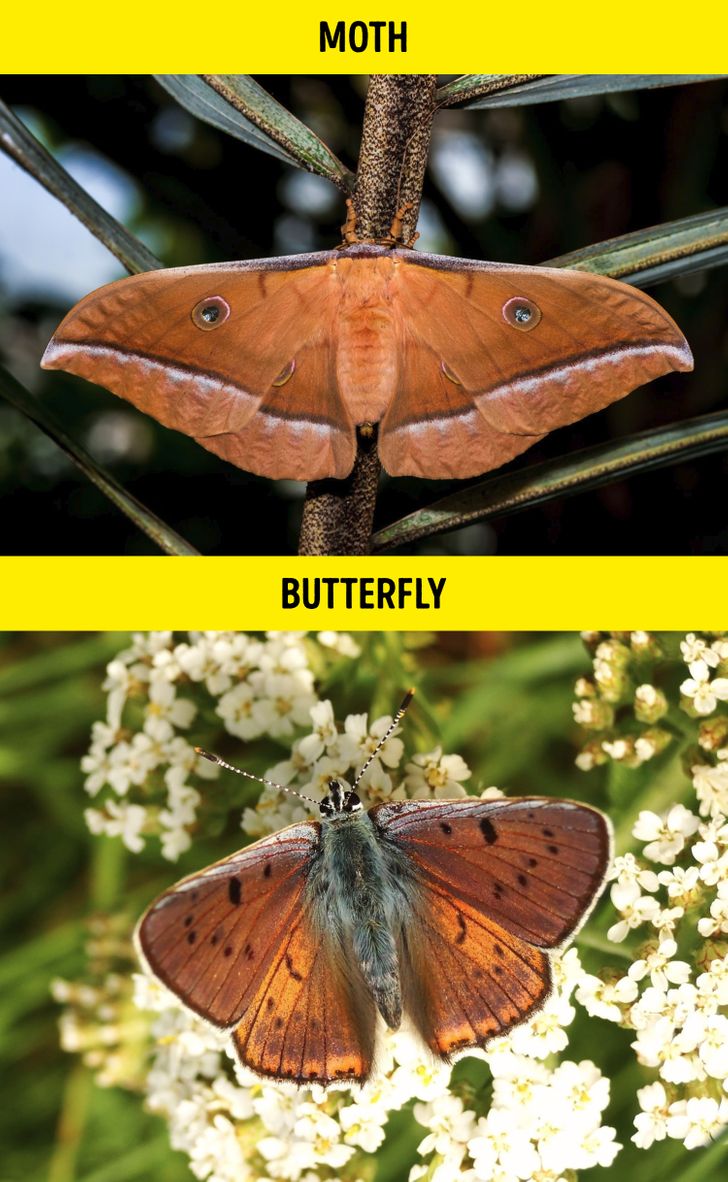
Moths have tent-like wings while butterflies flap their wings vertically. Moths usually rest with their wings open, while butterflies rest with their wings closed. Their antennas also differ: butterflies’ are long and thin and moths’ are short and feathery. Butterflies are strictly diurnal, while moths are mostly nocturnal.
10. Dolphin vs porpoise

The difference between dolphins and porpoises comes down to their snouts, fins, and figures. Dolphins have long “beaks,” slender bodies, and curved dorsal fins. Porpoises have more flat, sloping faces, smaller flippers, and shorter triangular dorsal fins.
11. Weasel vs stoat
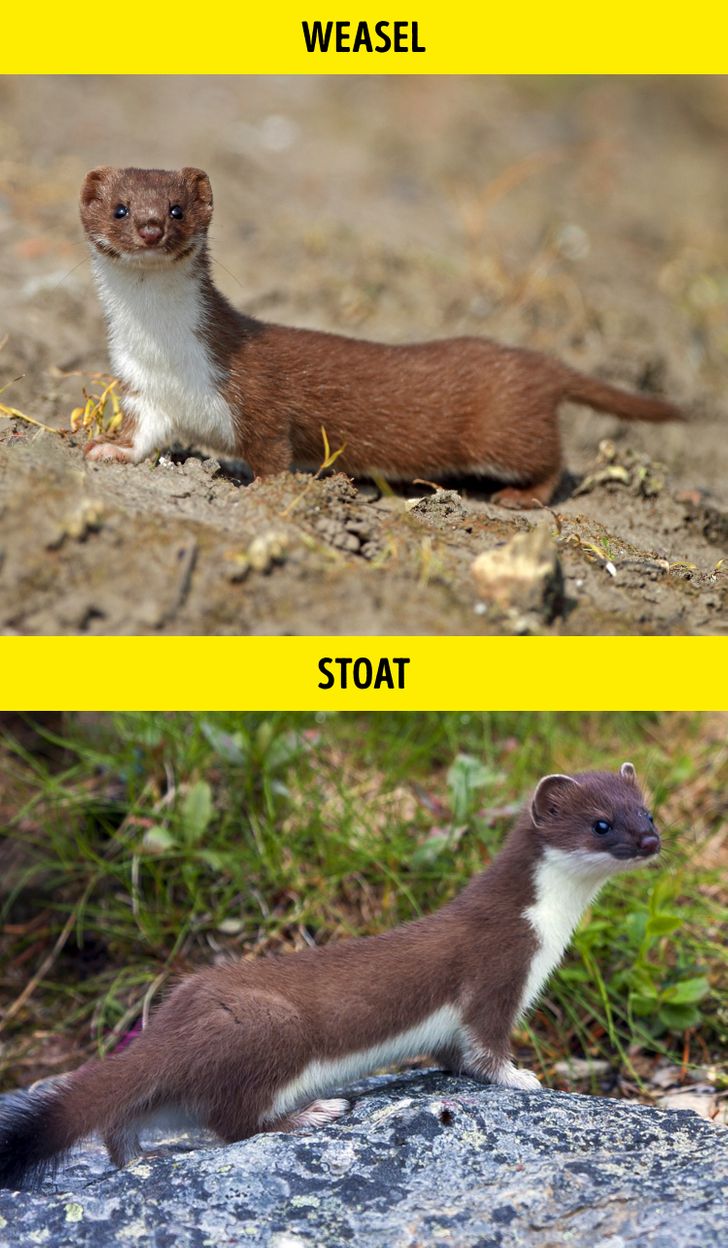
These 2 animals are close relatives. Stoats are bigger and have long tails with fuzzy black tips, while weasels’ tails are short and of the same color as the rest of the body. Stoats move in a bouncing gait with an arched back which looks hilarious, and weasels keep closer to the ground. Stoats also turn white in winter.
12. Eagle vs hawk vs falcon

Eagles are gigantic, powerful birds who prefer to live in open spaces like cliffs and mountains. Hawks are a little smaller and more nimble in the air, capable of maneuvering in more closed areas. Falcons are the smallest and fastest of the 3 and differentiate the most visually: they have larger eyes and shorter beaks.
13. Mouse vs rat
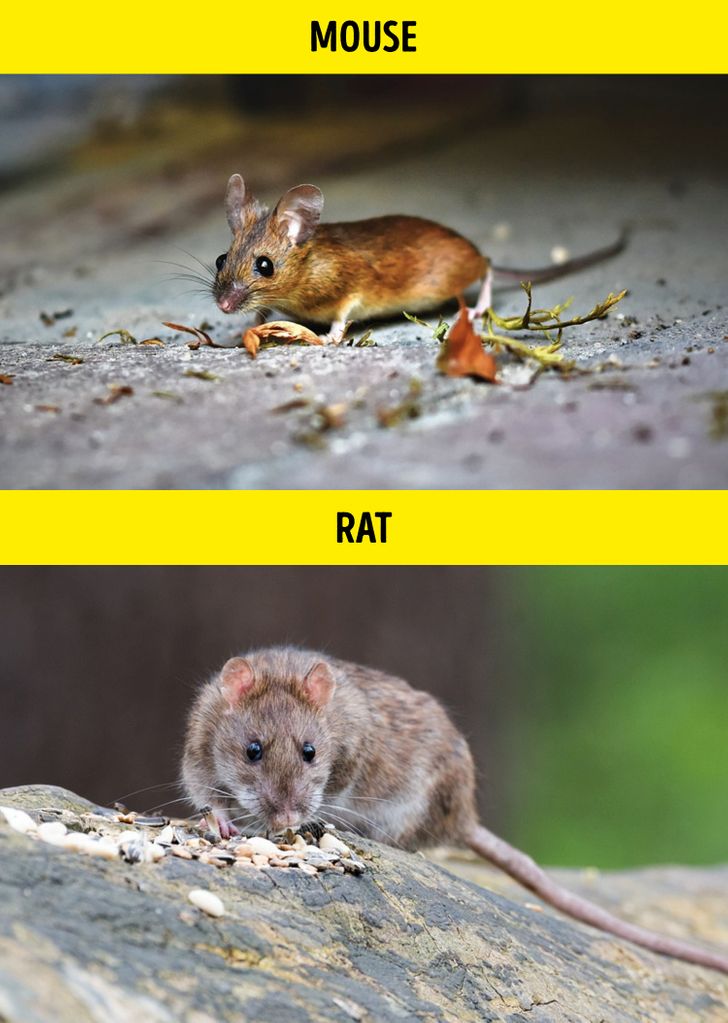
The 2 most famous (or infamous) rodents can be easily distinguished by 3 things: their size, tail, and ears. Mice are diminutive, even compared to young rats; they have thin long tails covered with fur while rats’ tails are thick and hairless. Mice have ears that are bigger in proportion to their bodies and are round and floppy with a tiny, triangular face. Rats’ faces are more prominent and blunt.
14. Seagull vs albatross
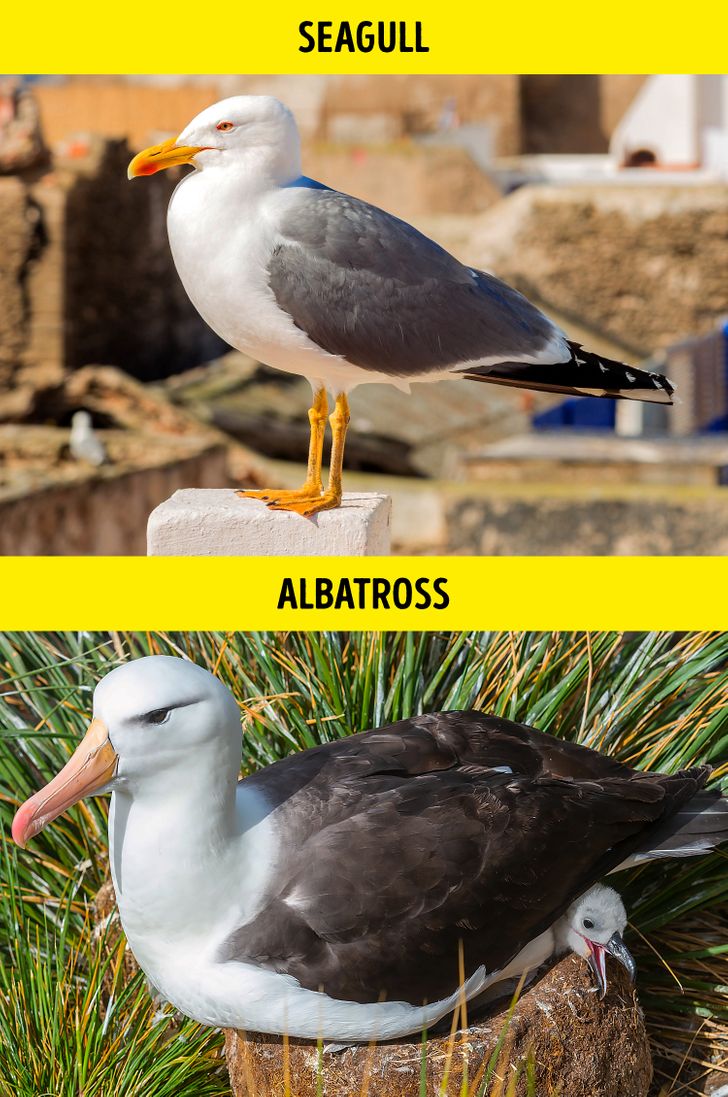
Gulls often live near water, be it the sea or ponds, and are rather acrobatic while diving and fish-catching, but aren’t fans of long voyages, unlike albatrosses. Albatrosses are portly birds who live in constant flight over the sea. They even have unique nostrils that allow them to remove salt from water and food.
15. Wolverine vs honey badger
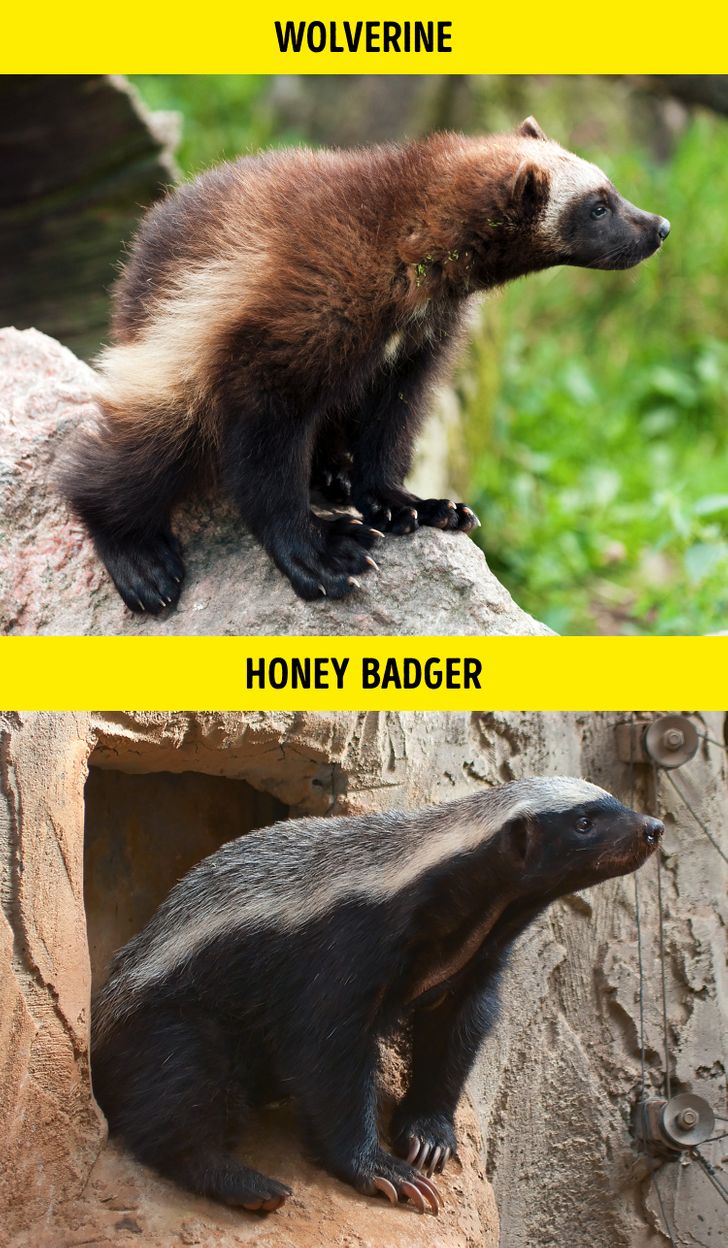
Despite living in different climate zones — the honey badger that lives in Africa and the wolverine that resides in the northern forests — both belong to the Mustelidae family. Wolverines are taller with longer legs and noticeable ears and have brown fur with yellow rings. Honey badgers keep closer to the ground and have black bodies with a white “cape” on their backs.
16. Wolf vs coyote vs jackal
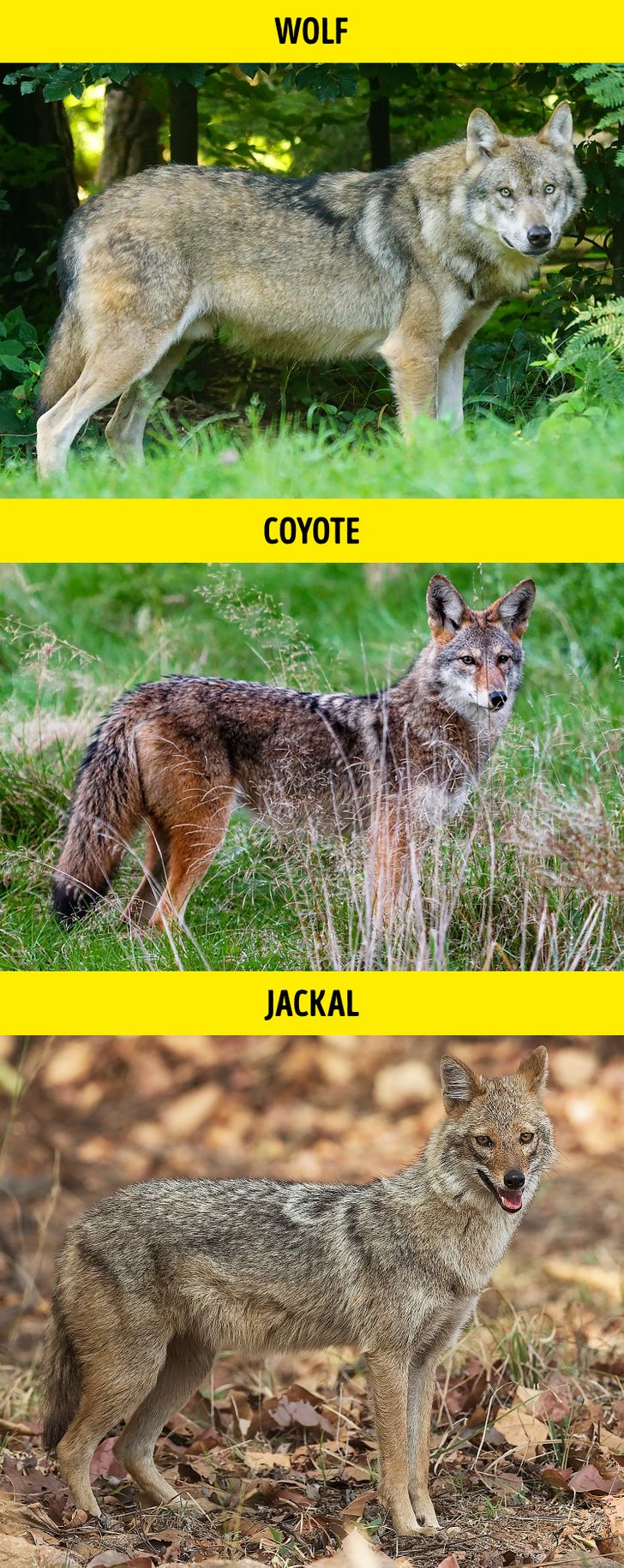
These 3 are “good boys and girls” that parade all over the globe. Jackals live in Africa, Asia, and India; coyotes live in Northern America; and wolves live all over the place. Wolves are large, sturdy animals, while coyotes and jackals possess a more lean and fragile frame.
Coyotes are recognizable for the red fur on their faces and ears while jackals have a more yellow-colored coat. Additionally, jackals are noticeably less fluffy because they don’t have to endure the harshness of winter.
Funny bonus: Wolverine vs the honey badger

What kinds of animals have ever confused you? If you know more examples, share them in the comments!
Preview photo credit shutterstock.com, shutterstock.com
My Stepmom Told Me to Wash Dishes After Her Birthday Party Because I Didn’t Gift Her a Dishwasher – Karma Hit back for Her Audacity

When Mia’s stepmother, Trudy, plans an elaborate party for her 45th birthday, Mia has no choice but to do as she is told, including being a hidden helper throughout the festivities. But lucky for Mia, karma seems to be on her side, ready to teach Trudy a lesson.
Grab some popcorn, folks, because this story is one of those moments when the universe steps in and delivers a cosmic smackdown right when you least expect it.
Let me introduce you to the key players of the story:

A smiling teenage girl | Source: Midjourney
I’m Mia. I’m sixteen years old and stuck in a suburban home with my dad and stepmom, Trudy. Trudy’s been around for about two years, and, oh boy, does she have the “wicked stepmother” act down perfectly.
If you looked up “entitled” in the dictionary, I’m pretty sure you’d find her picture staring back at you.
Life with her has felt like living inside a bad reality show, but no one is filming, and definitely not paying me for my trouble.

A close up of an older woman | Source: Midjourney
Dad stays out of the way as much as he can. He’s the “happy wife, happy life” type of man, except that Trudy’s never really happy. She’s the type who expects the world to fall at her feet and cater to her every whim.
Now, let’s talk about last Saturday, the day of Trudy’s birthday party. It was so over-the-top that, honestly, it could have been a wedding reception.
It was her 45th birthday, and Trudy was trying to hold on to her youth in any way she could. In the week leading up to the party, she strutted around the house like some kind of queen.

A smiling older man | Source: Midjourney
“You’d better get me something special this year, Mia,” she said when she came into the kitchen as I was cutting up fruit for my morning smoothie. “A dishwasher would be nice. After all, I’ve done a lot for you.”
Yeah, sure. Good old Trudy. She’s done a lot for me… if you count bossing me around like I’m some sort of Cinderella knockoff.
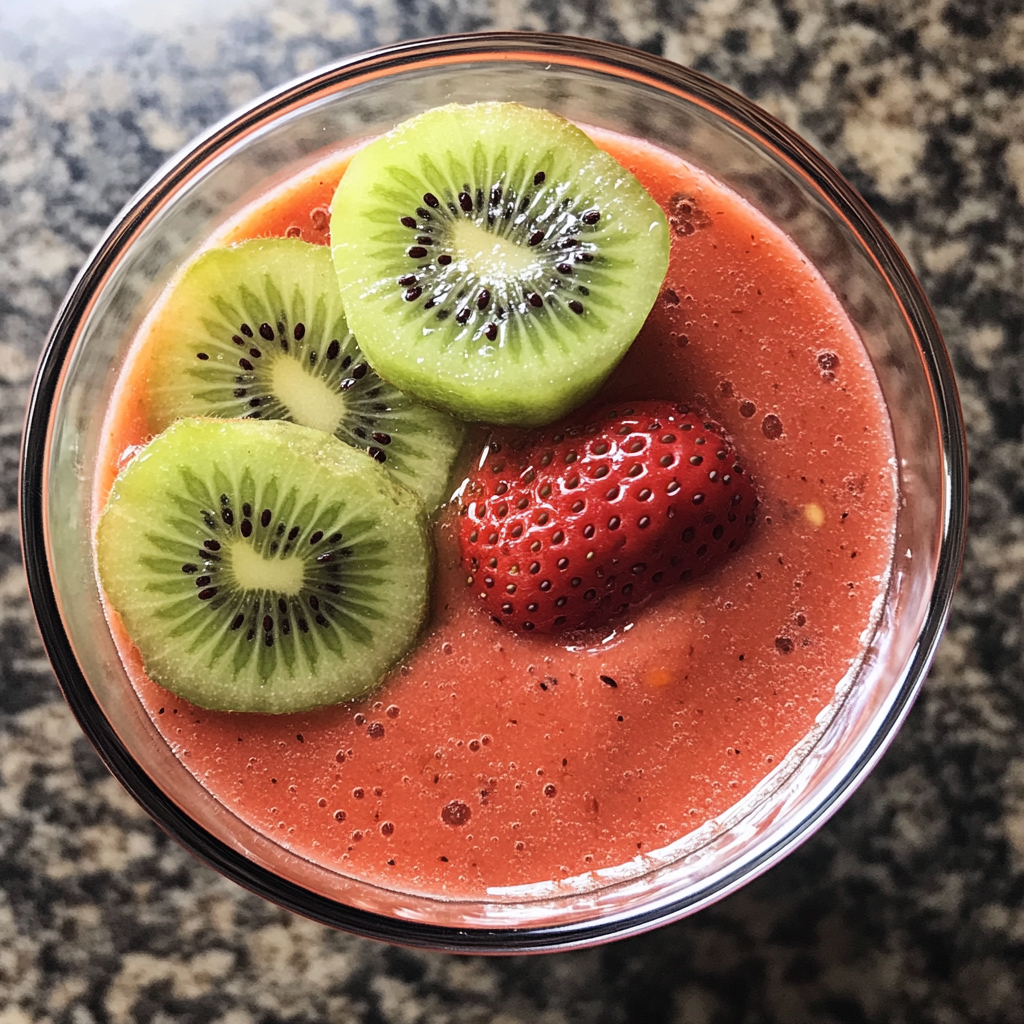
A close up of a smoothie | Source: Midjourney
“Uh, Trudy,” I said, adding yogurt to the blender, “I’m kind of saving for my prom dress.”
I already knew where this conversation was going.
Her face twisted into this weird look, like she couldn’t believe I just said that.
“Your prom dress?” she scoffed. “Mia, that’s ridiculous! You can just buy something from one of the clothing stores. Something cheap. A dishwasher is much more practical. I don’t want to hear any more excuses.”

A woman standing in a kitchen | Source: Midjourney
Excuses? I was floored. This woman really expected me to drop all my savings on an appliance just because she “deserved” it. Like, where’s my fairy godmother when I need her?
And anyway, Trudy was the one who convinced my dad that I was too young to get an after-school or weekend job.
“Mia can only babysit kids on this street,” Trudy told my dad one night at dinner. “She’ll be safe and only a few houses away from home. And anyway, it’s not like she needs that much money.”

A woman sitting at a dinner table | Source: Midjourney
So, all my prom dress savings? They were from babysitting jobs that I had taken over the past year.
They wouldn’t even cover a tiny dishwasher, let alone the dress I wanted. But I was determined to still find something that I loved.
Fast forward to the day of Trudy’s 45th birthday. The house was buzzing with caterers, an event planner ran around with a clipboard, and enough floral arrangements to rival a garden center.
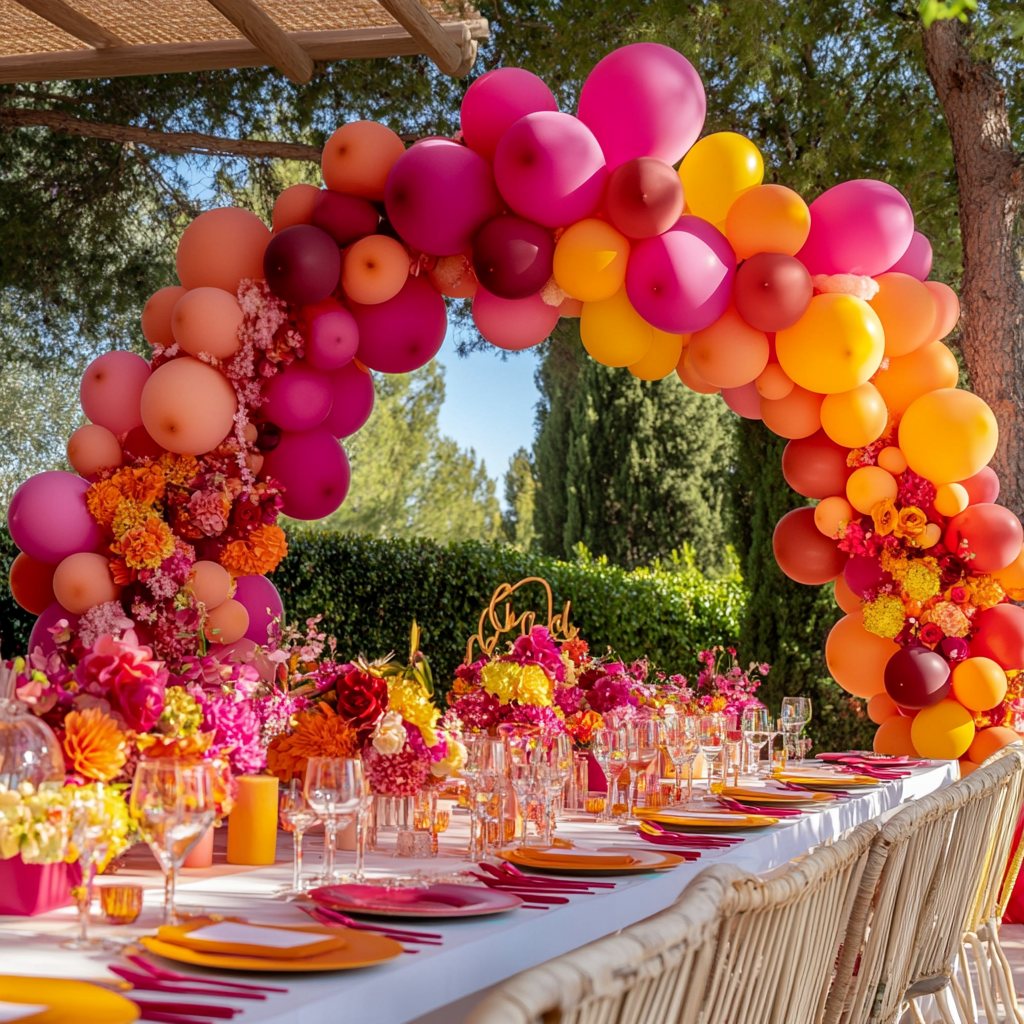
An outdoor birthday party setting | Source: Midjourney
Meanwhile, I was in the background, wiping down mirrors, setting up drink stations, and generally trying to avoid all eye contact.
“Jeez,” I said to myself, “are the Royal Family coming over?”
I set up the gin station and tried to leave for my room, hoping that I would make myself presentable before Trudy’s posse of friends showed up.
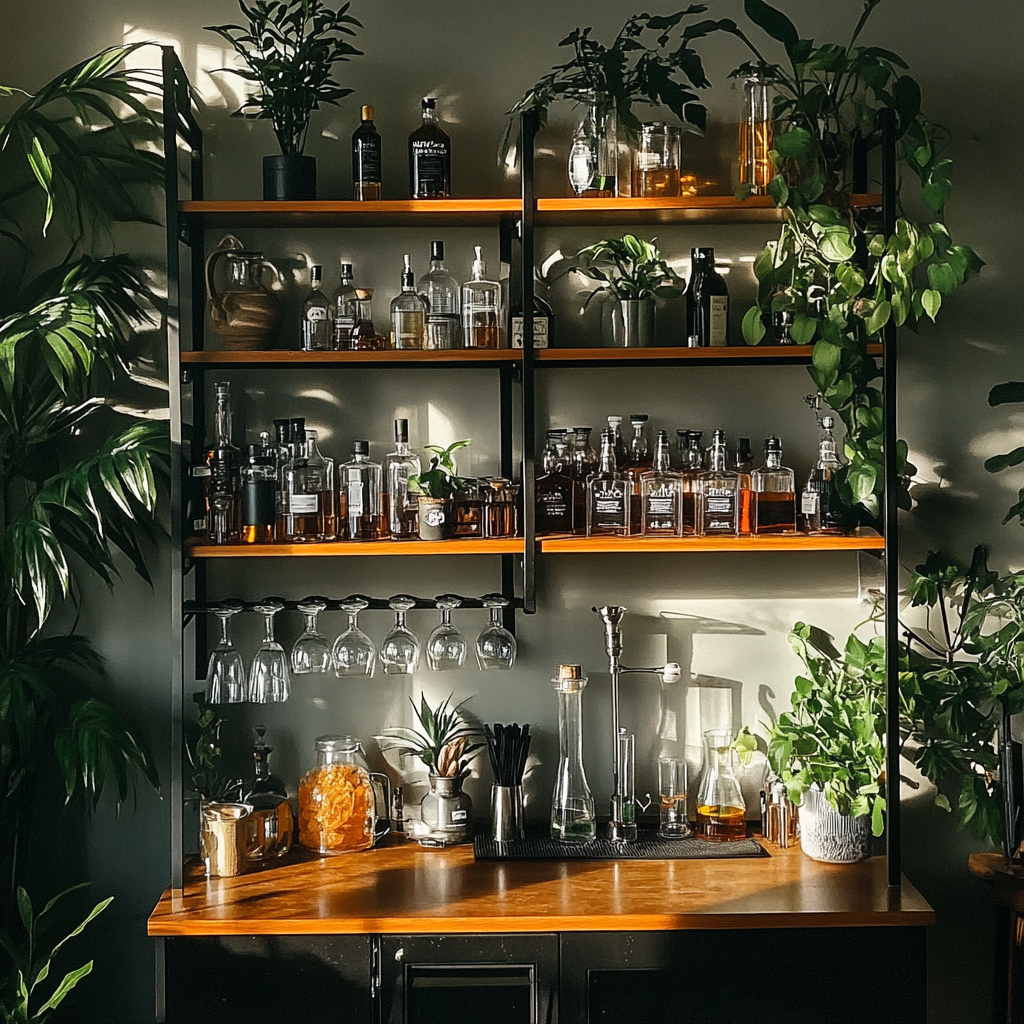
A gin station | Source: Midjourney
As soon as the guests arrived, Trudy transformed into some kind of celebrity. She walked around, tossing fake smiles and soaking up compliments like she was at the Oscars or something.
“Mia! Can you refill the drinks? My guests are thirsty!” she barked from the marquee outside.
Of course, I had no choice but to do so. I couldn’t say no. Not with so many people around. Trudy would probably implode.

A woman wearing a gold dress | Source: Midjourney
I did as I was told, floating around like the invisible Cinderella. I was counting down the minutes until we lit the candles on the elaborate cake and the whole day would just dwindle into nothing.
I hid away for a few moments, finally able to get my hands on some food. At least Trudy loved her food, and she had told the caterers that she wanted elaborate meals.
“You’re hiding here, kiddo?” my dad chuckled when he caught me eating a portion of lobster mac and cheese.

A bowl of lobster mac and cheese | Source: Midjourney
“I’m starving, Dad,” I said, eating another forkful of food. “And everyone is eating anyway.”
“Take some time off, Mimi,” he said. “Eat. I’ll bring you one of those fancy milkshakes from the milkshake station.”
Soon after, it was time for the cake. My dad lit the candles while Trudy beamed like a Cheshire cat and did a little dance.

A gold and white cake | Source: Midjourney
Everyone sang for her at the top of their voices, and Trudy blew out the candles. As the party was winding down, she clinked her fork against her wine glass and fixed me with that awful, expectant glare of hers.
“Mia, since you didn’t bother to buy me a dishwasher for my birthday, the least you could do is wash all these dishes. It’s only fair.”
I stood there, stunned for a second. Everyone went quiet. Twenty pairs of eyes stared at me like I was the villain in this scenario.
She really said it. Out loud. In front of all her friends.
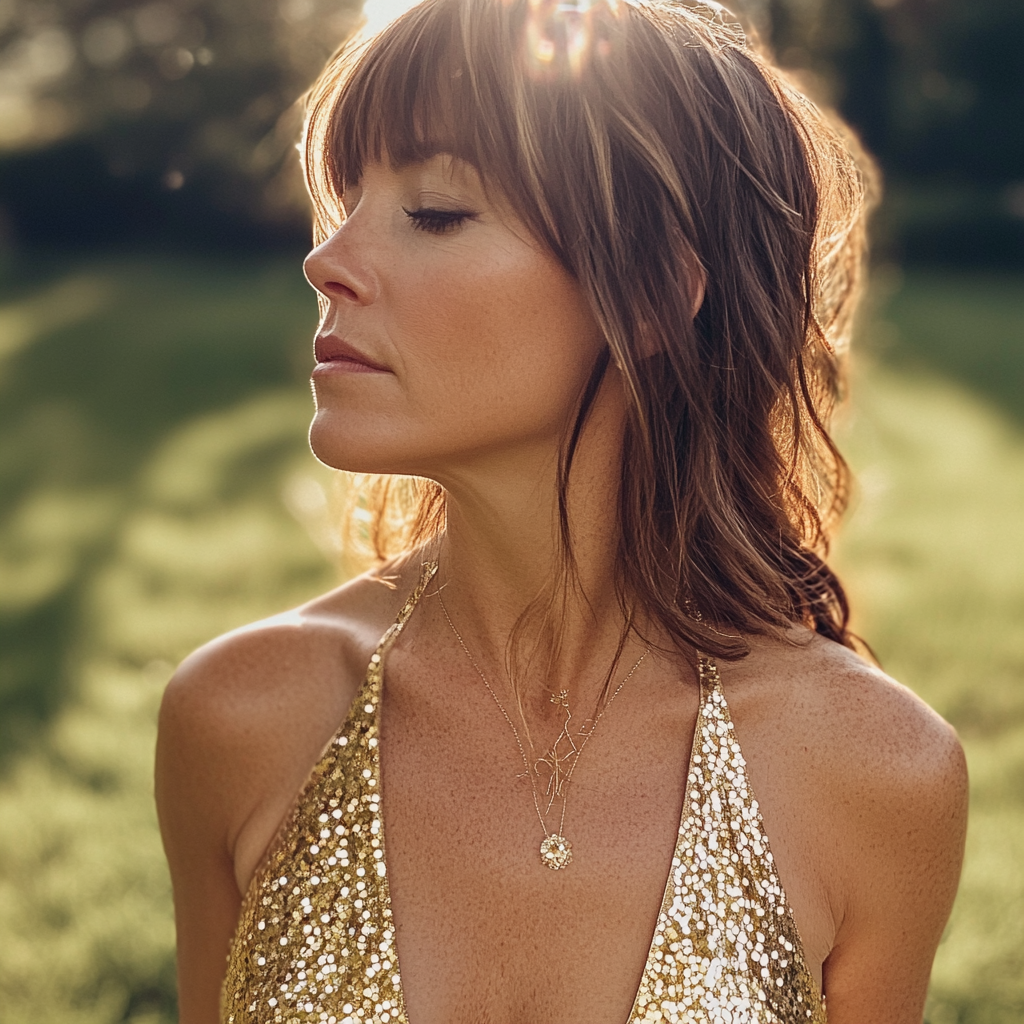
A smug woman in a gold dress | Source: Midjourney
“You didn’t get your mom a birthday present?” one of Trudy’s friends, Alexis, said. “That’s just… rude. And sad.”
My throat tightened, but I managed to keep my voice calm.
“Trudy, I told you, I didn’t have the money. Especially for a dishwasher. I’ve been saving for prom.”
She waved her hand like I was talking nonsense.
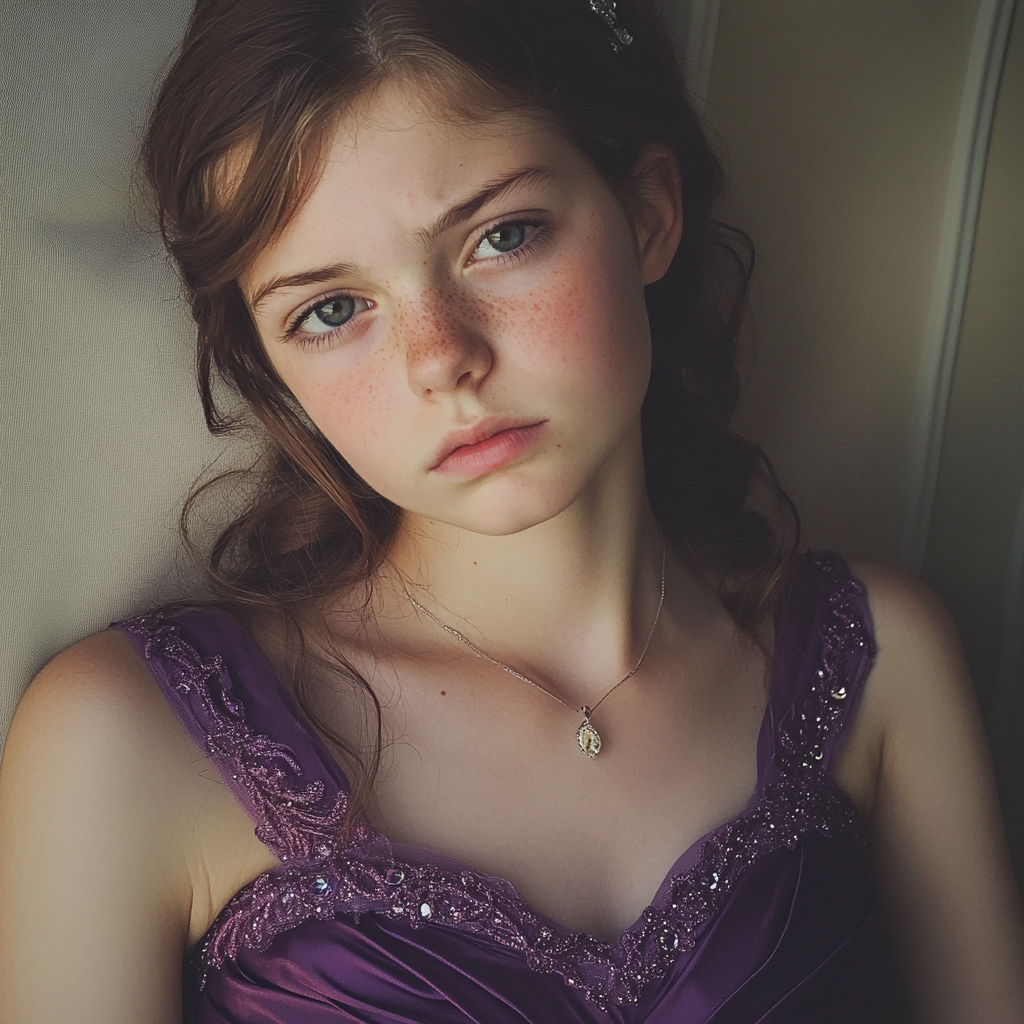
An upset teenage girl | Source: Midjourney
“Just wash the dishes, Mia,” she said. “Do something useful for once.”
I could have screamed. But instead, I swallowed my pride and nodded.
“Fine. I’ll get changed and started on them,” I said.
I spent the next hour elbow-deep in soapy water, scrubbing until my fingers went numb. I wanted to cry, but instead, I just scrubbed harder, imagining the day I’d finally escape this madhouse.
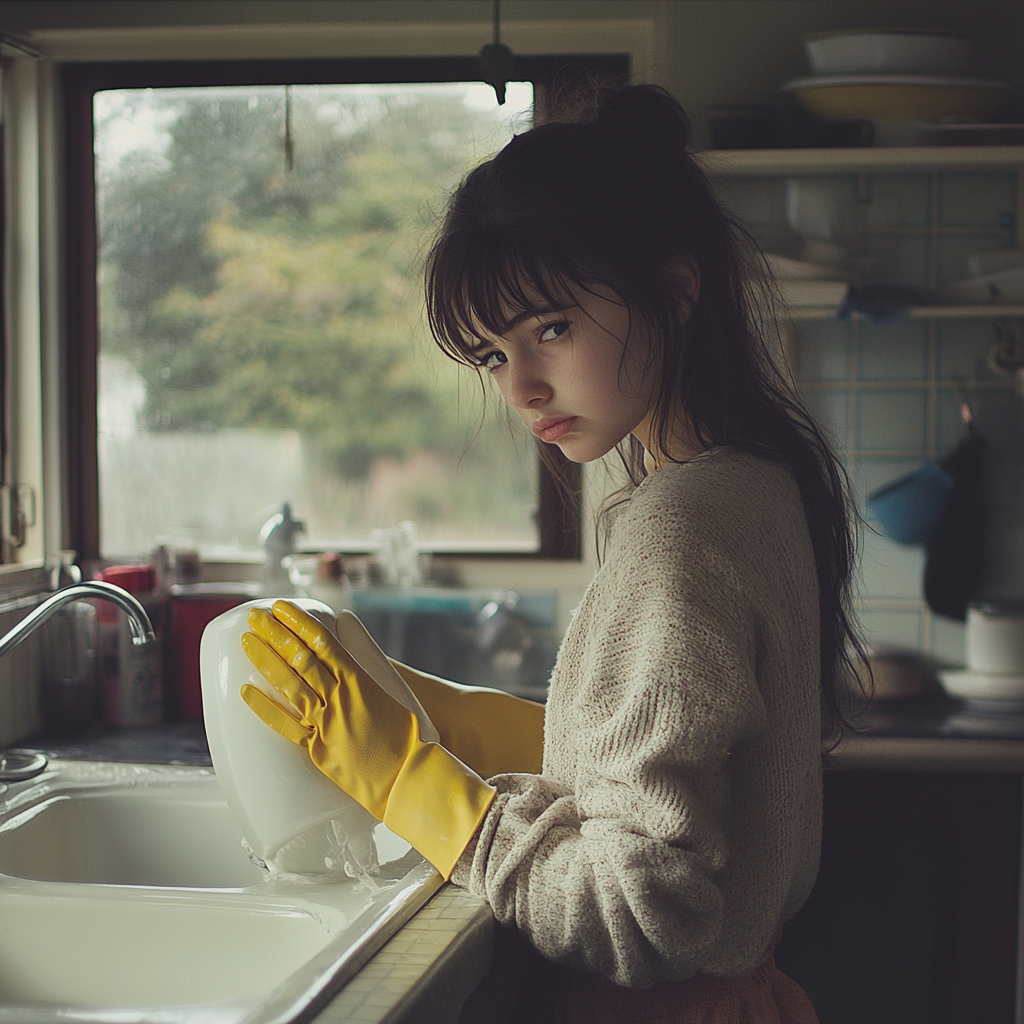
A teenager washing dishes | Source: Midjourney
By the time I finished, the party was over, and Trudy’s friends were long gone. I dragged myself to bed, emotionally drained.
The next morning, I woke up to the sound of Trudy’s shriek coming from the kitchen. I thought maybe one of her fancy new gadgets broke. She had just bought herself a lavish new coffee machine that looked like it belonged in a coffee shop.

A coffee machine | Source: Midjourney
But when I walked into the kitchen, I found her standing in the middle of a disaster zone.
The kitchen was trashed.
The smell of burnt plastic filled the air, and the floor was flooded.
“Mia!” she screamed when she saw me. “Look at what happened!”
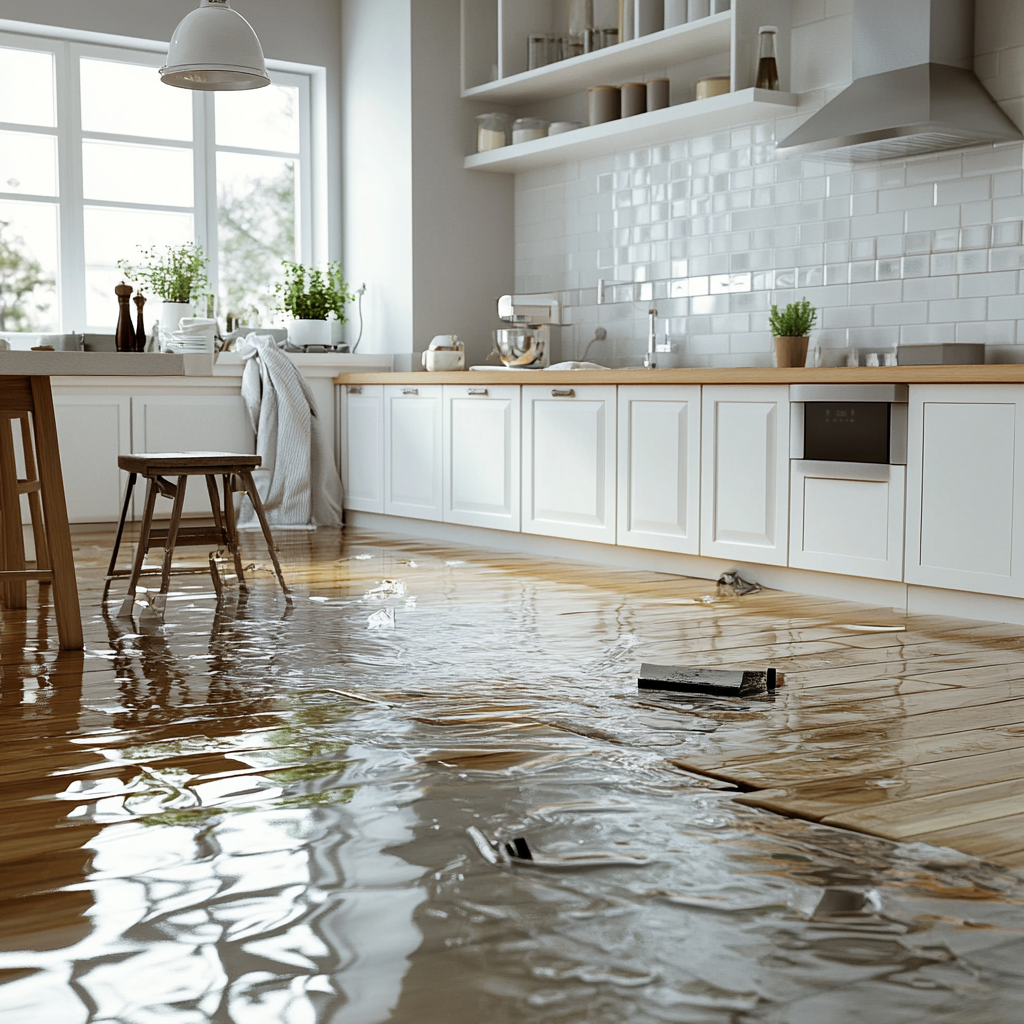
A flooded kitchen | Source: Midjourney
I blinked, still half-asleep.
“What… what is going on?”
“The pipes!” she shrieked, flailing her arms. “Oh, my kitchen is ruined! This is going to cost a fortune to fix!”
“But everything was fine last night when I went to bed. What happened here?”
My dad stuck his head into the kitchen.

An annoyed woman | Source: Midjourney
“Trudy, did you really drop all the meat oils into the sink last night?” my dad asked.
“I did!” she said. “I didn’t know where else to throw it out. And the caterers left without taking it. But I did throw some drain cleaner down the sink, too.”
“Oh, Trudy! You’re not supposed to do that! Now look! You messed this up! I told you to just pour out a kettle of boiling water.”

Oil being poured in a sink | Source: Midjourney
My first instinct was to laugh. I know I shouldn’t have, but come on. After everything? Didn’t it just seem like karma played a part in this, too?
While Trudy was losing her mind, I couldn’t help but feel a tiny smirk tugging at my lips. I didn’t say a word.
For the next week, the kitchen was completely out of commission. My dad, bless his heart, tried to soothe her, but the damage was done. The cost of the repairs was so high that Dad announced that they’d have to cut back on expenses.

An annoyed woman | Source: Midjourney
“Except for Mia,” he said. “I have $500 for her prom dress.”
“You can’t be serious, David!” Trudy hissed. “You want me to pay for the new kitchen tiles, but you can spoil Mia?”
“You spoiled yourself for your party. I can spoil my child for her prom.”

A smiling man | Source: Midjourney
And that was how Trudy learned not to cross my dad. But she did change her tune a bit. She allowed me to get my part-time job, and she tried to actually mend things with me.
“I’ll come with you when you go looking for your dress, Mia,” she said.
Do you think it will last?




Leave a Reply